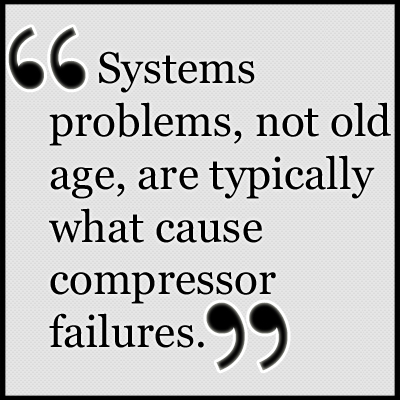
Is your Commercial Compressor in Good Shape?
When was the last time you had your HVAC system inspected by a professional HVAC technician? You should have your system checked during the fall and spring, before heating and cooling season to ensure comfortable temperatures. So if it has been a while, it is probably a good idea to schedule an HVAC inspection. This will help identify any potential problems and ensure your system is working as efficiently as possible. Technicians will check for reliable, efficient and safe operation of all HVAC equipment, including checking filters, inspecting belts, motors, electrical switches, contacts, safety switches, refrigerant levels, gas pressure, and, of course, the compressor.
Commercial Compressor Replacement Tips
Follow these guidelines carefully to ensure proper replacement and operation.
- Collect Information: It all starts with a little research: model number, serial number, phase, voltage, amp rating, refrigerant type, and type of failure, burnout or mechanical. What shape is the contactor in? All of this information will help you when it is time to actually replace the compressor.
- Verify the New Compressor: While it is rare, sometimes you can get an electrically bad compressor from the factory so check it for a short to ground with a meter.
- Prepare the Wires: Mark the wires so you know where they go on the compressor. This will allow the replacement to run much smoother.
- Oil Sample: Test the oil for acid contamination using a field test kit.
- Clean Up: There are no shortcuts here. Oversize the liquid line filter drier, add a replaceable suction line filter drier, change the oil after the compressor has run for a period of time under a good load, and retest the oil.
- Test the System: Take an initial mega ohm reading. Start the system. Take another reading after the compressor has run for a time. The new reading should be close to the baseline. If the reading goes down after the compressor has run for a while, then an oil and drier change is needed.
- Log the Start-Up: Take your readings and fill out your field start-up log, noting suction and discharge pressures, super heat temperature, sub-cooling temperatures, crankcase temperature, voltage, amps, mega ohm, inlet and outlet temperatures and sight glass color. This will help the next technician better understand how the system worked initially after the compressor replacement.
HVAC Maintenance with Crockett Facilities Services, Inc. (CFSI)
At Crockett Facilities Services, Inc. (CFSI), our award-winning facilities maintenance services optimize the performance of mechanical and heating and cooling equipment. We help building owners, property managers, facility professionals and engineers to lower their operating expenses and energy consumption through proactive and preventive HVAC maintenance. Our service technicians are fully trained and qualified to maintain, repair, troubleshoot, and install all types of sophisticated refrigeration, dehumidification and heating, ventilation and air conditioning systems, such as rooftop units, air handling units, chillers, heat pumps and boilers.
Click Hereto request a service quote!
For more information on Commercial Compressor Replacement and HVAC Maintenance, please contact CFSI by calling 301.262.2771 or email sales@crockett-facilities.com. Like us on Facebook; follow us on LinkedIn, Twitter, and Google+.
Sources:
Commercial Compressor Replacement, ContractingBusiness.com
